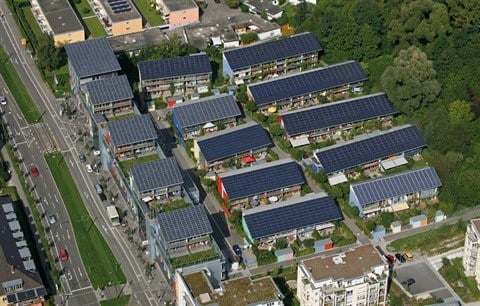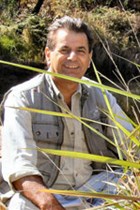
[Earth Focus] Solar power: lessons from nature
It is quite remarkable how science has invented a technology to convert sunlight directly into electricity. It's called solar electric, photovoltaic or PV power, and scientists are taking a leaf out of nature's own book to refine this fast-growing technology.
![[Earth Focus] Solar power: lessons from nature](https://biz-file.com/c/1509/310438.jpg)
© Iakov Kalinin – 123RF.com
PV is the technological equivalent of photosynthesis, except that electricity, not chlorophyll, is created by the solar panels. On a sunny South African day enough electrical power is generated to power a commercial or residential set-up. Eskom would be used essentially as a back-up, meaning that if the sun disappeared in stormy weather, Eskom would kick in automatically. That's having the best of both worlds and it's quite feasible today. On a partly cloudy day, the photons would continue to stream through to the panels and the generation of electricity would continue.
Currently, this technology is more cost effective in a commercial than residential environment, as there is less energy demand after sunset in a commercial set-up. A home would require additional batteries to keep electricity flowing after hours and this does add to the cost.
A critical element in a successful PV system is a reliable installer; a company with a track record, able to fine tune, guarantee and maintain the system.
Payback is a realistic three to five years depending on the financial package selected.
International growth in PV technology
While this technology is growing rapidly in South Africa, it is part of an international phenomenon. In the USA, statistics reveal that 85% of PV panels are used in the residential market. In Germany, there are entire villages powered by photovoltaic power, and in most cases homeowners are able to sell excess electricity back into the grid, creating a source of useful income. In SA, the REFIT (Renewed Energy Feed-In Tariff) programme has not yet taken off.

Solar-powered village in Freiburg Germany
Lessons from nature
Today, new research into how plants and other living organisms convert sunlight into energy is being undertaken. One such researcher is Dr Gregory Scholes, Professor of Chemistry at the University of Toronto, one of the world's top scientists in the field of plant photosynthesis.
According to Dr Scholes, "This new bio-inspired understanding will help scientists devise artificial light gathering systems that can far exceed existing solar cells in functionality, and so pave the way to new, environmentally-friendly energy technologies."
"We can imagine, for example, solar cells that optimise themselves to suit the local light conditions or that make better use of the solar spectrum by efficiently capturing and processing light of different colours."
The research knows no boundaries and kelp forests growing under one metre of ice, or bacteria from the Bahamas, show remarkably new ways to harvest energy from sunlight. Nature has helped science identify different chemical reactions. For example, scientists observe how light-absorbing molecules 'concentrate' and rapidly store solar energy in a biological solar cell called a "reaction centre". This energy is captured at an incredibly high speed.

Image by Roger Metcalfe
On a sunny day, 10 quadrillion photons of light strike a leaf every second, representing an enormous flow of energy. Incredibly, almost every photon on the visible spectrum is captured by plant pigments, thus promoting growth.
Says Dr Scholes: "Photosynthetic solar energy conversion occurs on an immense scale across the Earth, influencing our biosphere from climate to oceanic food webs."
"While photosynthesis does not generate electricity from light, like a solar cell, it produces energy - a 'solar fuel' - stored in molecules."
Nature's secrets
Clearly, we have much to learn from nature. Other research efforts are being directed into how a moth's eye and its wings capture and reflect light. This form of research may reveal how to use different refractive indices and spectral frequencies to optimise the harnessing of solar electric energy.
Another technology, known as tracking technology, mimics how a sunflower, for example, turns to follow the sun throughout the day. This has translated into highly efficient solar panels that actually follow the sun to keep the rays perpendicular to the panel.

Roof-mounted solar array
Solar cells capture up to 40% more energy when they can track the sun across the sky. Until now, conventional, motorised trackers have proved too heavy and bulky for pitched rooftops. Current research at Stellenbosch University is set to solve this problem which has stumped some of the world's top engineers for years.
As Dr Scholes concludes: "Nature has solved with astonishing efficiency some of the riddles of fundamental importance that vex our species today; if we are hunting for inspiration, we should keep our eyes open for the unexpected and learn from the natural sciences."









